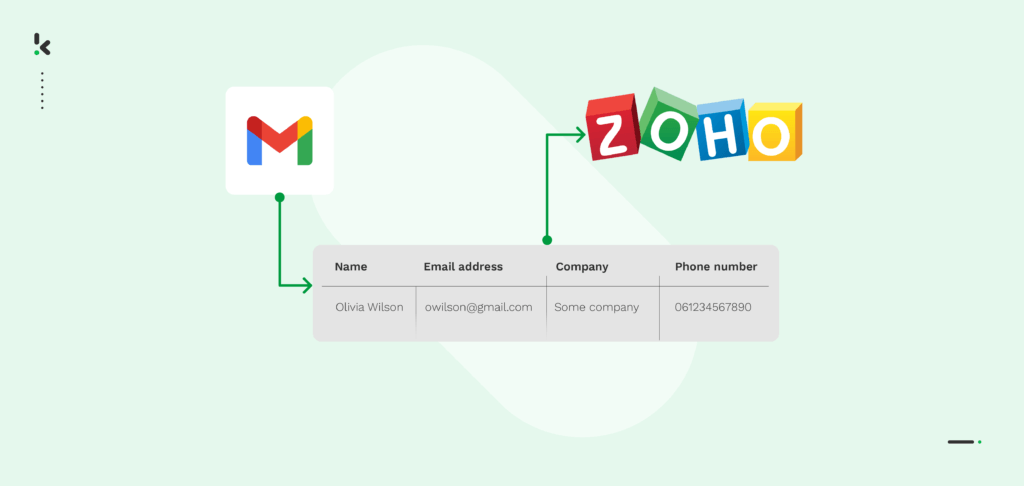

Do you receive hundreds of emails from prospective customers on a daily basis? Then you know the pain of manually extracting and entering their contact details in your CRM applications. As important as this administrative task is in generating leads, as time-consuming and error-prone as it is.
Luckily, your business can now automate the integration of generated email leads to any preferred CRM application your business is using. For instance, with an Intelligent Document Processing platform that can parse emails, you not only automate data entry for the clients’ contact details, but the whole process of generating email leads and integrating them into your CRM software.
Let’s delve deeper into the topic and learn together the importance of email lead generation and how your business can automate this process, to enhance sales outcomes. Let’s get started!
Export Email Leads Automatically To Your CRM with Klippa
Klippa’s Dochorizon IDP platform helps streamline the whole workflow involved in generating email leads, as well as integrating them into your CRM application. By leveraging AI-powered OCR, the platform ensures an accurate email parsing and data extraction process.
Let’s see first-hand how email lead generation can be automated with Klippa’s IDP platform.
Step 1: Sign Up on the Platform
First step is to sign up to the platform. Simply provide your contact details and get started.
Step 2: Configure Your Prompt Builder
Before going to the flow builder, you first need to configure your prompt builder. The prompt builder allows you to create specific prompts for your data capture module, depending on your use case.
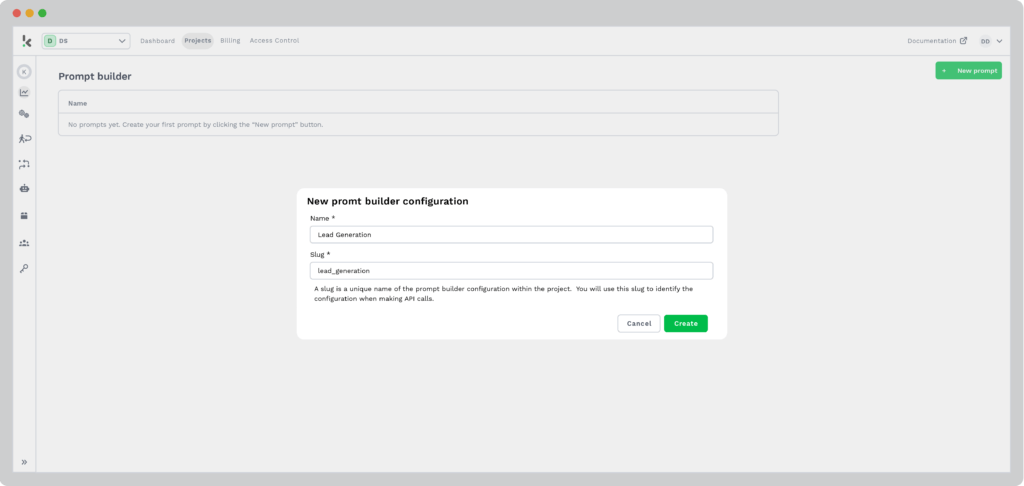

In the prompt builder, you have the option to choose existing prompts, depending on your document type, for instance, if you have an invoice or resume. You can also choose to create a prompt from scratch and add your desired data fields.
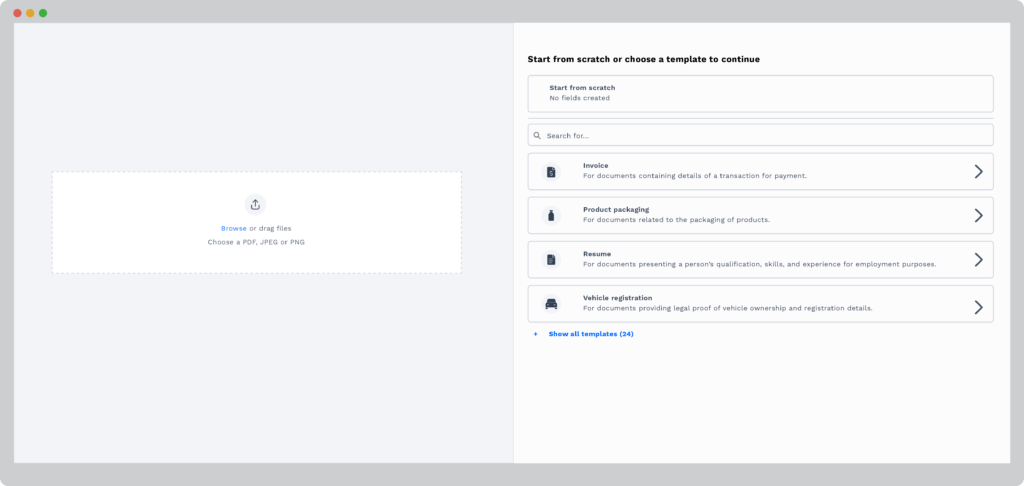

For this example, you create and add specific fields that you want to extract from emails, such as names, company names, phone numbers and email addresses.
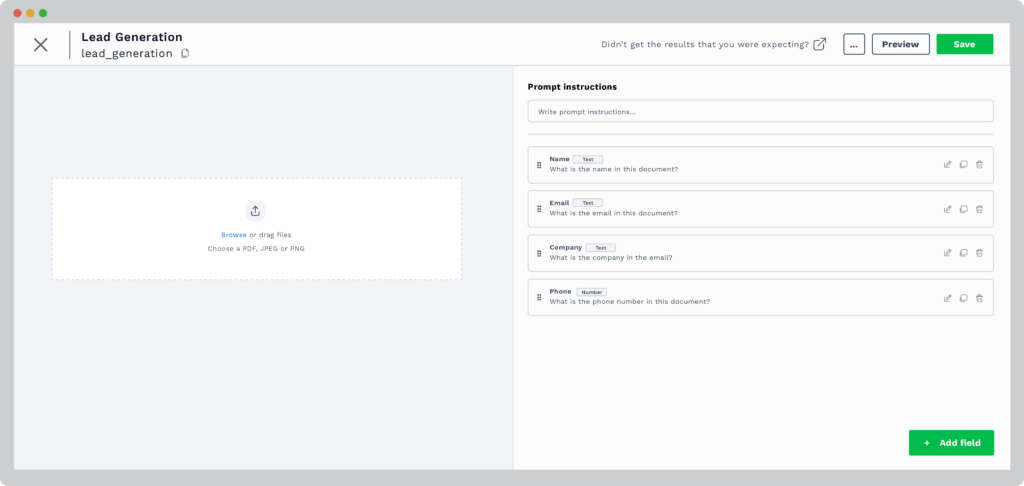

Step 3: Select Input Source
In this step, you select the input source from where you retrieve your data. In this case, it will be your email account. We support multiple email providers, such as Gmail or Outlook. Simply log in with your email credentials to connect your account to the platform and then select the location of your data.
The information of the incoming leads can be in an email attachment, or in the contents of the email itself. Choose from the right side of the flow builder, the input source.
For this example, we will use Gmail.
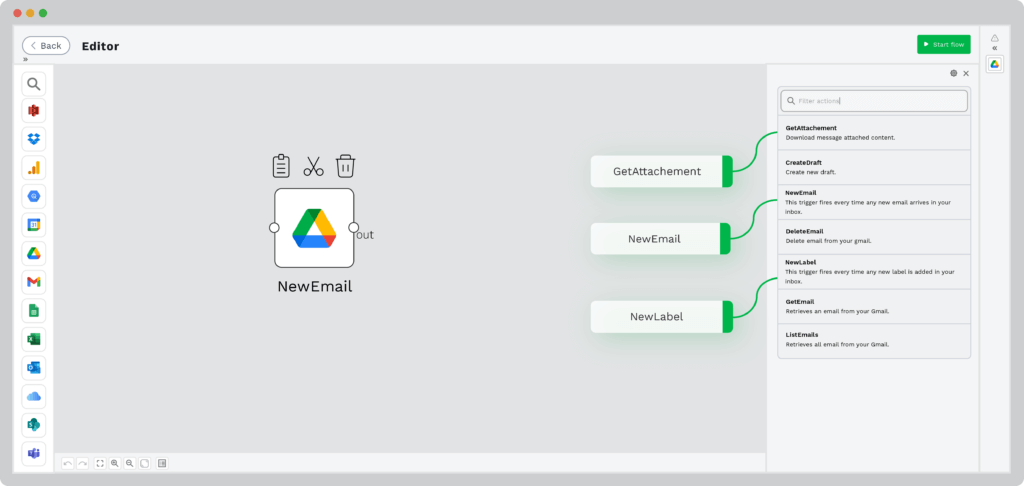

Step 4: Document Capture with the Prompt Builder
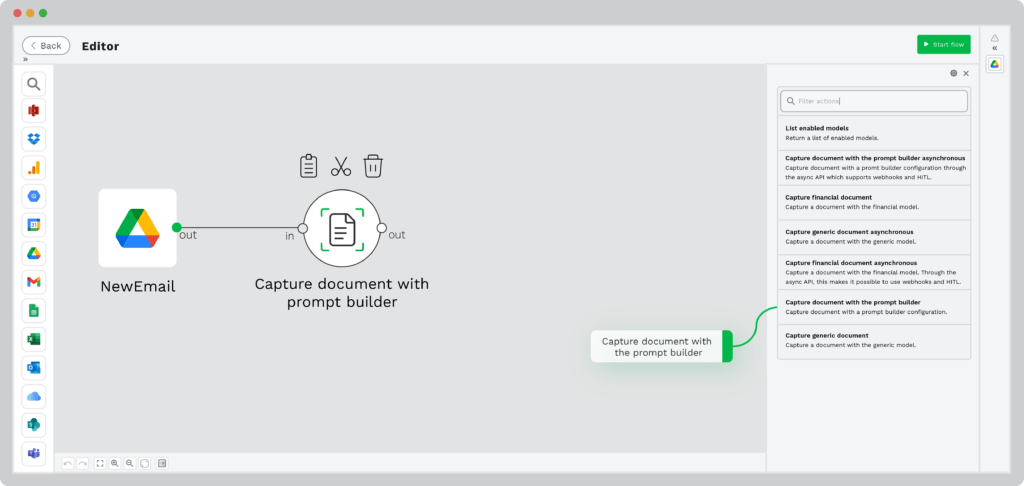

Now, it is time to extract the data. Select the document capture module and choose “document capture with the prompt builder”. This will employ the previously-configured prompt builder to solely extract the data fields you want.
Step 5: Convert Data to the Desired Format
After the lead information is extracted, it is now time to convert it to the format you want. By default, the data is extracted from the email and converted to JSON format.
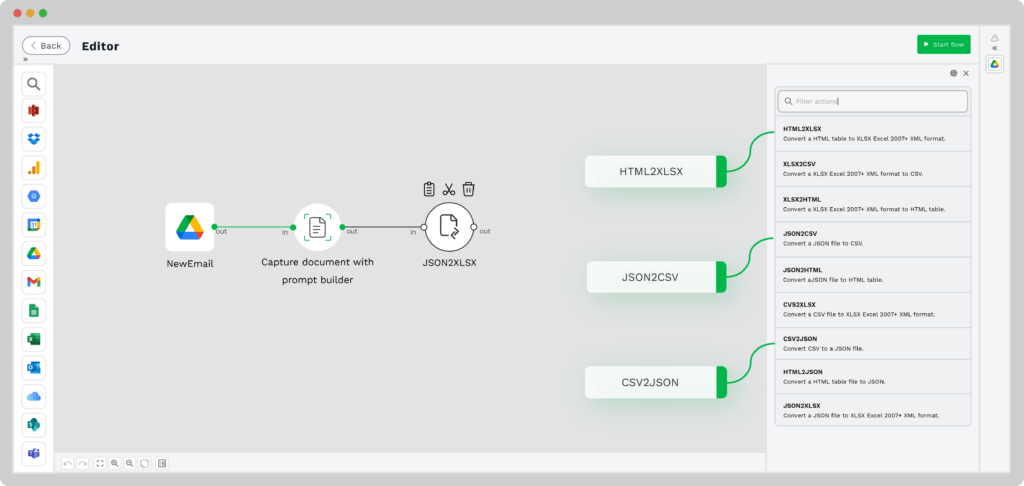

When it comes to CRM integration, in most cases, the extracted information can stay in a JSON format, or it can also be converted to CSV. The only difference consists in the CRM application your business employs and its accepted formats.
Step 6: Select Output Source
After having extracted and converted the data, it is now time to select your output source, which in this case would be the CRM application used in your business. Some of the most frequently used ones are Zoho, SalesForce and PipeDrive.
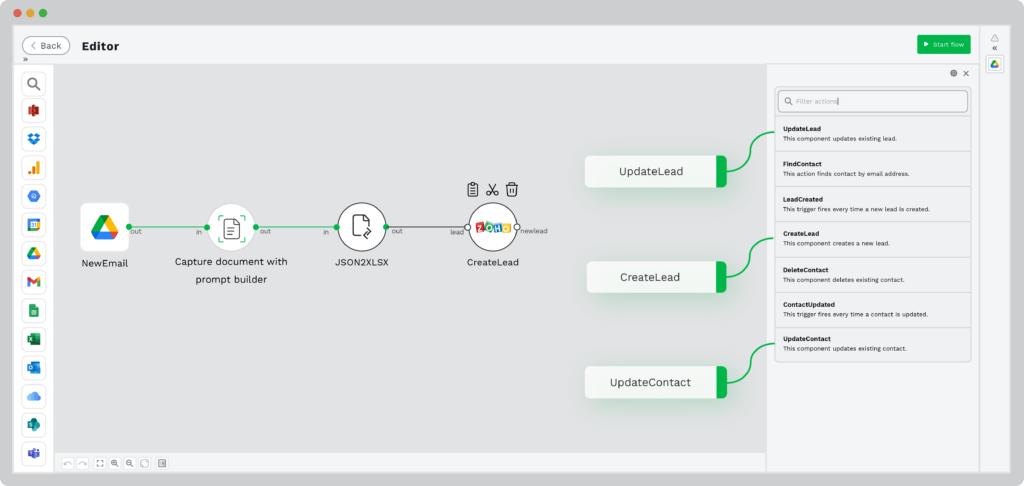

For this example, we will select Zoho CRM as the output format.
And that is it! The platform’s intuitive drag-and-drop interface makes it easy to navigate and create customized workflows, so your business doesn’t spend time on redundant and time-consuming tasks.
Why Automate Email Lead Generation?
Generating leads is the backbone of every sales department, and frankly, every company. Thus, this task should receive the special attention it deserves. Automating email lead generation creates a better overview of all incoming leads, so your sales experts can better assess their quality and identify opportunities.
Since lead generation implies managing important information, such as client names, phone numbers and email addresses, it can quickly become hard to manually keep track of all of it. Not to mention, manually extracting this data and entering it into your CRM application comes with shortcomings, such as spelling mistakes or inaccurate information. These details can affect your business and cost you potential high-value customers.
Automating this process means bringing more accuracy and efficiency in your lead generation process. From improved lead management to faster response times, automating lead generation with an IDP platform creates a better foundation for expanding your client portfolio. Curious to discover more benefits of automating lead generation with email parsing? Keep reading!
Benefits of Automating Email to CRM
Creating an automated flow for generating email leads and integrating them to CRM doesn’t just automate data entry for your sales department. By automating this process, your business can experience firsthand:
- Increasing information accuracy: Ensuring constant accuracy of your CRM database is now an effortless practice, as you don’t need to worry about human errors in data entry.
- Shortening processing times: Save valuable time by automatically transferring leads from emails, eliminating the need for manual exporting and thus increasing workflow efficiency.
- Expanding lead lists for sales: Streamline follow-ups with potential leads and unlock new sales opportunities with automated exportation of leads from emails, so your business keeps track of all arising opportunities.
- Lead nurturing: As you already have the customers’ information in your database automatically transferred, you can now enhance the customer experience by getting in touch with them in a timely fashion.
- Ensuring data security and privacy: Safeguard customer data more effectively by automatically exporting it from emails, reducing the risk associated with manual entry and ensuring their information remains confidential, away from third-party systems.
- Ensuring control: Take command of the lead management process by automating lead exportation, enabling precise control over when, how, and where leads are exported across your CRM system.
Automating email lead integration means streamlining repetitive administrative tasks, so your sales department has a better and simplified process of qualifying leads and managing prospects. But the streamlining process doesn’t have to stop here. With Klippa DocHorizon, you can also automate the verification, anonymization or classification processes.
Enhance Your Lead Generation Process for CRM with Klippa
Klippa’s DocHorizon IDP platform allows you to automate all tasks involved in integrating email-generated leads to your CRM applications. With our end-to-end solution, you get:
- High-accuracy email parsing, allowing you to extract information from both the email contents and its attachments
- Large variety of attachment parsing options, such as invoices, financial or identity documents
- Ability to process emails and attachments in all Latin-alphabet languages
- Automatically classified documents, for seamless digital archiving
- Protected client information thanks to our data masking and anonymization features
- ISO and GDPR-certified platform, so your business is adhering to regulatory compliance
If your business is ahead of the curve and is looking for integration solutions only, Klippa has the option to be integrated via API into any CRM application or system your business is using.
Curious to know more? Contact our experts for additional information or book a free demo down below!